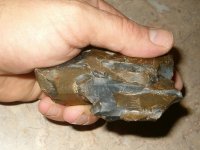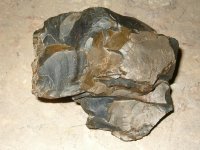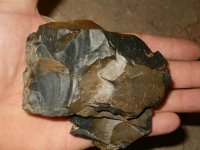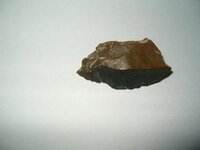Ohio_Doug
Hero Member
Found this at my dig site, at first I thought it was just a core, but I think it has been worked into this shape for a purpose. Does'nt have the shape of a typical core or chunk of flint I'm used to finding. I'm leaning towards a chopping tool of somesort or maybe a hand axe. Give me your thoughts.
Attachments
Upvote
0










